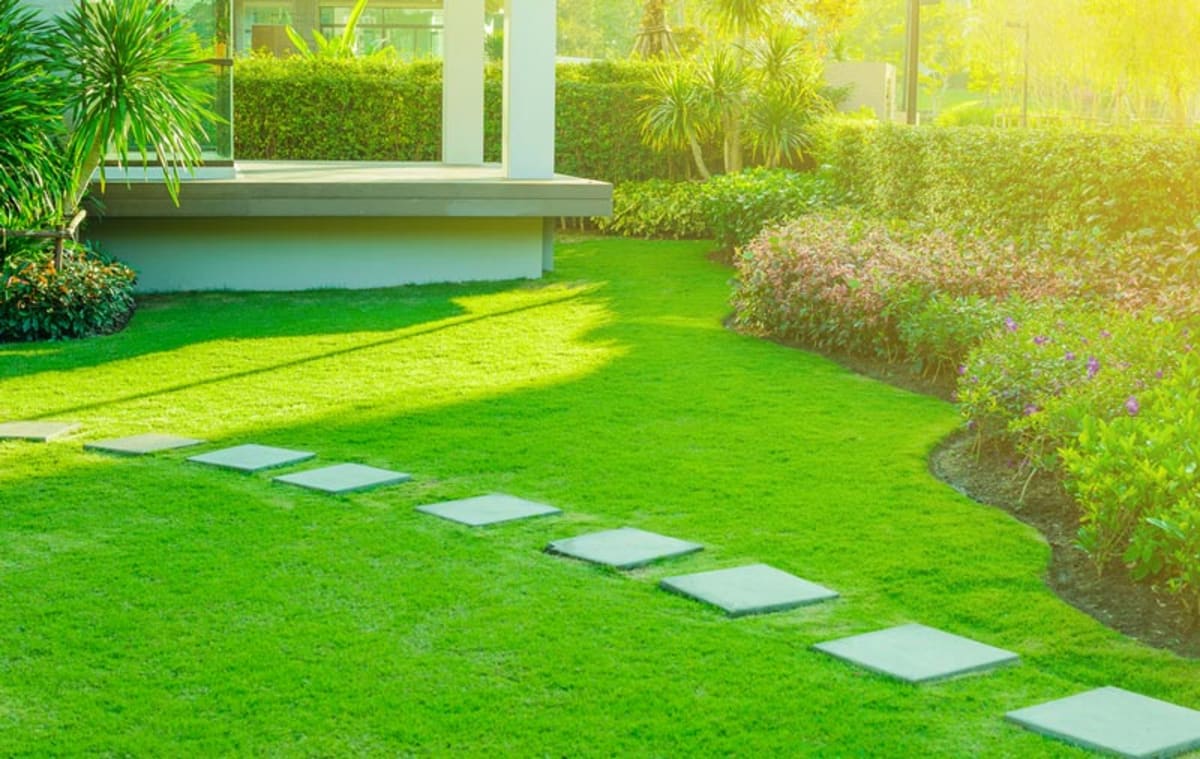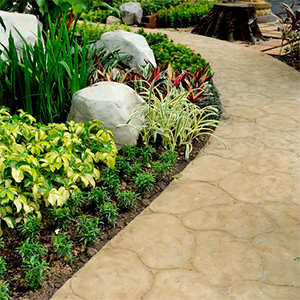Efficient Lawn Cleanup Jacksonville: Keep a Tidy and Healthy And Balanced Lawn
Efficient Lawn Cleanup Jacksonville: Keep a Tidy and Healthy And Balanced Lawn
Blog Article
Elevate Your Home's Aesthetic With Lasting Landscape Design Designs and Eco-Friendly Practices

Advantages of Lasting Landscape Design
Implementing sustainable landscaping methods not only conserves natural sources yet additionally advertises biodiversity and boosts overall ecological wellness. One significant advantage is the reduction of water usage via the use of drought-resistant plants, rainfall yards, and reliable irrigation systems.
Moreover, sustainable landscaping can improve dirt health and wellness by minimizing using chemical fertilizers and chemicals, consequently developing a healthier setting for plant growth and advantageous dirt organisms. This, subsequently, improves the total durability of the landscape to hold up against environmental stress factors and climate adjustment impacts - bush removal Jacksonville. Furthermore, lasting landscaping methods can attract varied wild animals, including pollinators like bees and butterflies, fostering a much more balanced and dynamic ecological community within the residential property
Incorporating Native Plants
To build upon the benefits of sustainable landscaping, a calculated emphasis on including indigenous plants can better enhance ecological strength and advertise biodiversity within the landscape. Indigenous plants are varieties that normally take place in a certain location and have actually progressed to prosper in the regional climate, soil conditions, and community. By including native plants in landscaping designs, homeowner can decrease water usage, reduce the need for chemical pesticides and fertilizers, and support the local wildlife populace.
Including indigenous plants additionally aids in maintaining the one-of-a-kind character and identification of an area's vegetation. These plants frequently need much less upkeep once developed, making them a lasting and affordable landscape design solution in the future. Additionally, indigenous plants can bring in indigenous pollinators like butterflies and , adding to the general health of the environment.
When picking native plants for landscaping projects, it is vital to choose species that are appropriate to the particular environmental problems of the site. Consulting with local nurseries or herb yards can give useful assistance on selecting the appropriate native plants for a certain area. By integrating indigenous plants right into landscaping designs, home owners can create attractive, lasting outside spaces that profit both the setting and the community.

Water Preservation Techniques
Reliable irrigation methods play a critical duty in sustainable landscaping practices, making sure optimal water preservation initiatives in exterior rooms. Implementing techniques such as drip watering, rainwater harvesting, and clever watering systems can dramatically lower water waste while maintaining a healthy and balanced landscape. Trickle watering delivers water straight to the origins of plants, lessening evaporation and runoff. Rain gathering involves accumulating rain from roofings and storing it for later usage in watering, decreasing the reliance on municipal water resources. Smart irrigation systems use climate information and soil dampness levels to adjust sprinkling routines, avoiding overwatering and promoting water effectiveness.
In enhancement to sophisticated irrigation methods, xeriscaping is one more water-saving landscaping technique that concentrates on making use of drought-resistant plants, compost, and efficient watering to create a low-water landscape layout - lawn cleanup Jacksonville. By selecting native plants that are appropriate to the local environment and dirt conditions, property owners can minimize the demand for too much watering, ultimately saving water and advertising a sustainable outside atmosphere
Eco-Friendly Hardscaping Concepts
Enhancing outdoor areas with eco-friendly hardscaping functions navigate to this website can contribute dramatically to sustainable landscape design practices. Opt for materials like reclaimed wood, recycled concrete, or natural rock to minimize environmental influence when considering hardscaping elements. These materials not just include a distinct visual attract your exterior room but likewise minimize the requirement for brand-new resources removal.
Implementing permeable leading alternatives such as crushed rock or permeable concrete can assist decrease water overflow and promote groundwater recharge. These alternatives allow rainwater to seep right into the ground, stopping disintegration and lessening the burden on stormwater systems.
Incorporating indigenous plants into hardscaping styles can additionally improve eco-friendliness by sustaining regional wild animals and minimizing the demand for too much watering or chemical treatments. By including green walls or vertical yards, you can present extra plant life right into city setups, boosting air quality and biodiversity.
Incorporating energy-efficient lighting, such as solar-powered LEDs, into hardscaping designs can decrease power intake and lower your residential property's carbon footprint. Focusing on green hardscaping concepts not only boosts the charm of your outside space however additionally demonstrates a dedication to ecological stewardship.
Maintenance Tips for Lasting Landscapes

Frequently trim plants to promote healthy and balanced growth and stop overgrowth that can result in pest problems or diseases. Usage organic plant foods to nurture the soil and plants without unsafe chemicals that can leach right into the environment. For hardscaping aspects, such as absorptive pavers or stone pathways, consistently clean them to stop particles build-up and maintain their functionality. By staying aggressive with maintenance jobs, you can preserve the charm and sustainability of your landscape for several years to come.
Final Thought
Finally, lasting landscaping techniques use many advantages for building owners, from improving the aesthetic charm of the surroundings to advertising environmental preservation. By integrating indigenous plants, applying water preservation methods, and making use of green hardscaping ideas, homeowner can create lovely landscapes that are additionally environmentally accountable. With appropriate upkeep, lasting landscapes can grow and add to a Click Here much healthier ecological community for both human beings and wild animals.
In addition, lasting landscape design can improve dirt wellness by minimizing the use of chemical plant foods and chemicals, therefore developing a much healthier setting for plant why not try these out development and helpful dirt organisms.To build upon the benefits of sustainable landscaping, a strategic focus on integrating native plants can additionally boost ecological resilience and promote biodiversity within the landscape. By including native plants in landscaping designs, property owners can reduce water use, lessen the demand for chemical pesticides and fertilizers, and support the local wild animals populace.
These plants frequently require less upkeep when established, making them a sustainable and cost-efficient landscaping remedy in the lengthy run. By integrating indigenous plants into landscape design styles, building proprietors can create stunning, sustainable outside spaces that profit both the environment and the area.
Report this page